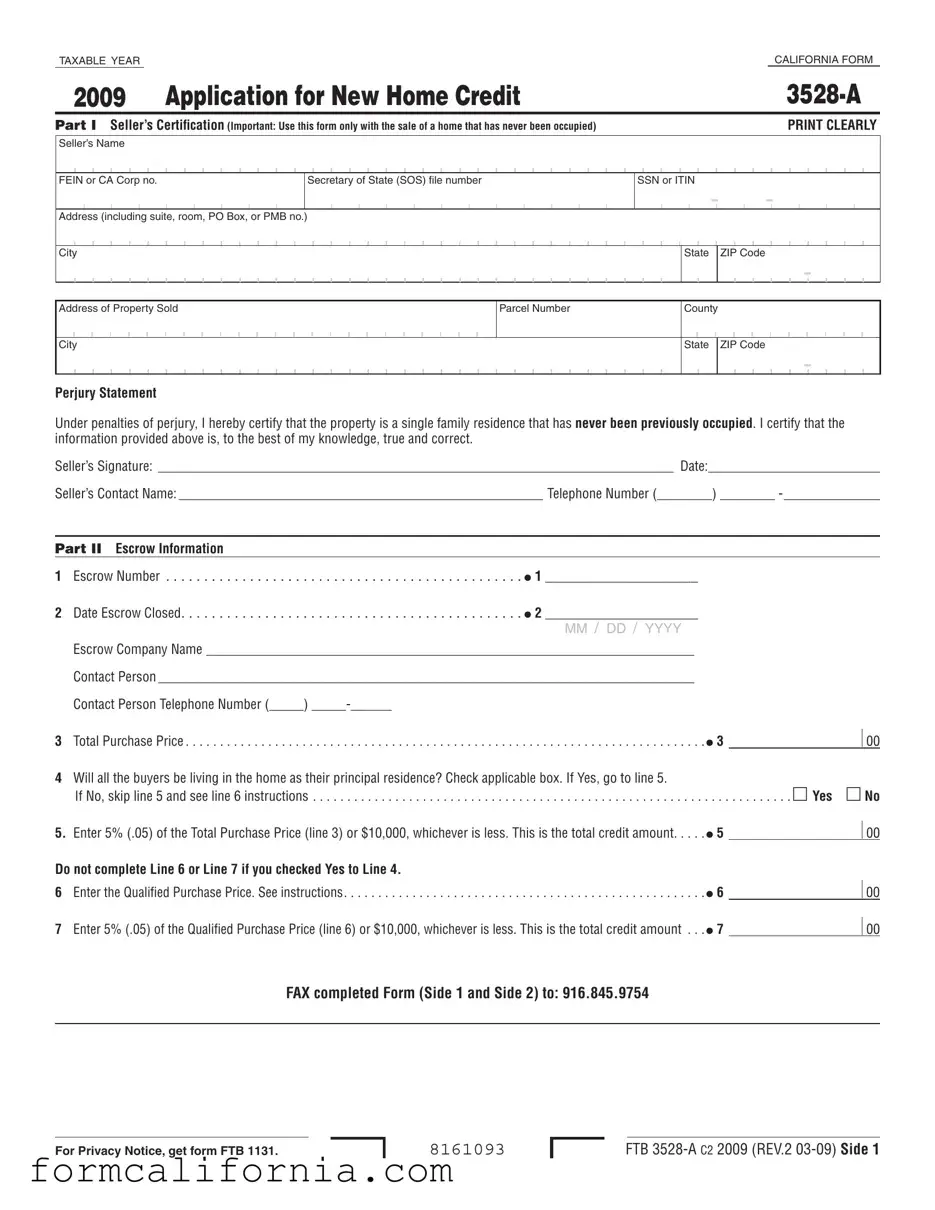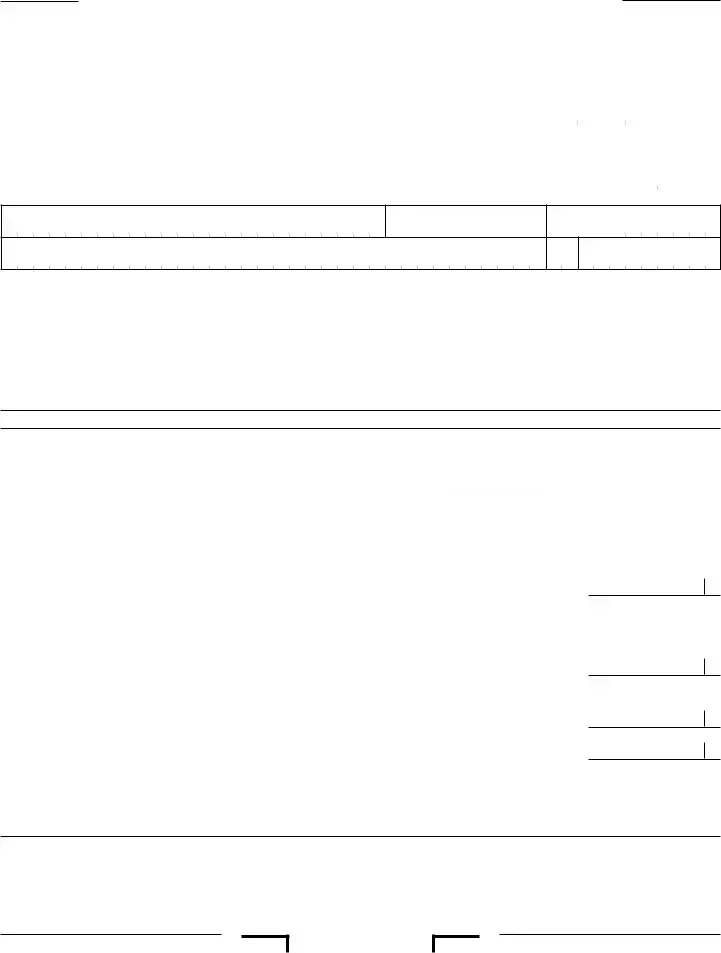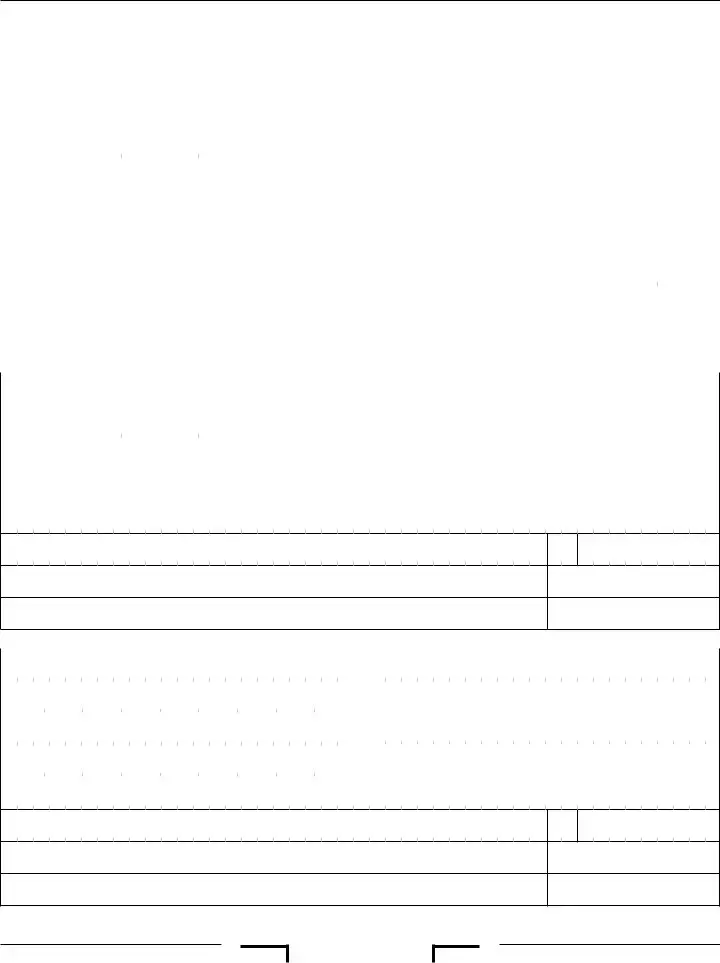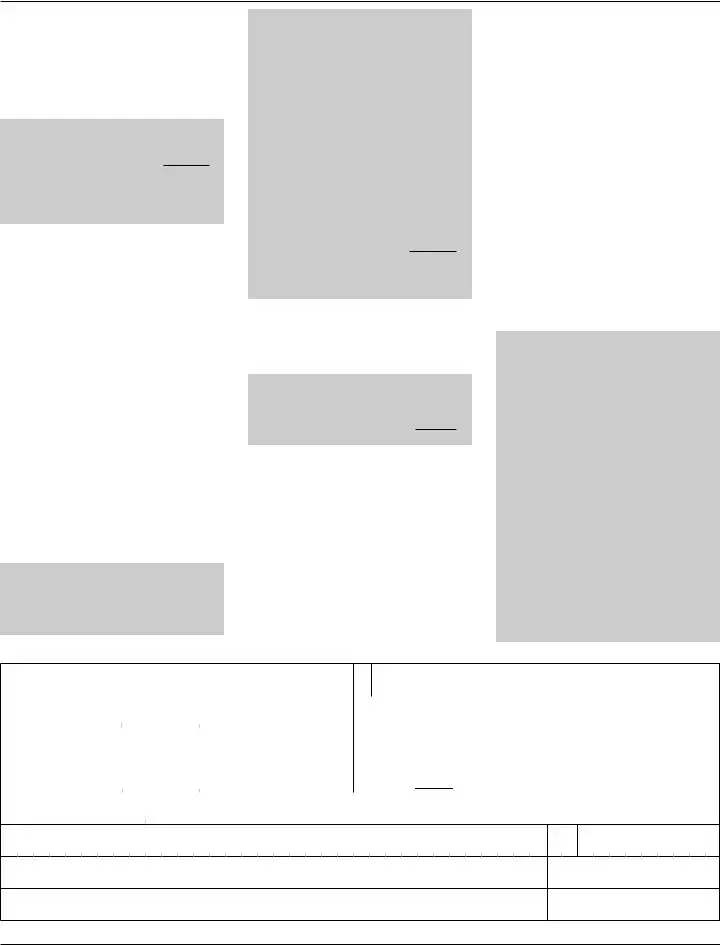|
General Information |
The FTB may request documentation to |
residence is made, on a timely filed original |
|
A |
Purpose |
ensure the parties have complied with the |
return. If the available credit exceeds the |
|
requirements of the credit under Revenue and |
current year net tax, the unused credit may not |
|
Use form FTB 3528-A, Application for New |
Taxation Code (R&TC) Section 17059. |
be carried over to the following year. |
|
Home Credit, if you are a seller of a new home |
The credit must be apportioned equally for |
F Filing Form FTB 3528-A |
|
which has never been occupied and are selling |
|
two married taxpayers filing separate tax |
The escrow person will FAX a copy of the form |
|
to any individual who purchases the residence |
returns, even if their ownership percentage |
|
on or after March 1, 2009, and before March 1, |
is not equal. For two or more taxpayers who |
FTB 3528-A to the FTB and send one copy to |
|
2010. The seller must first complete Part I of |
are not married, the credit shall be allocated |
the buyer within one week after the close of |
|
form FTB 3528-A, certifying that the home |
among the taxpayers who will occupy the |
escrow. If a seller has several buyers, send |
|
has never been occupied, and provide a copy |
home as their principal residence using their |
only one application per FAX. |
|
to the buyer or escrow person. The buyer will |
percentage of ownership in the property. The |
Do not mail the form. |
|
complete the rest of form FTB 3528-A. The |
total amount of the credits allocated to all of |
FTB’s FAX Number is 916.845.9754 |
|
escrow person will FAX the completed form |
these taxpayers shall not exceed ten thousand |
The FAX number will be disconnected once the |
|
FTB 3528-A to the Franchise Tax Board (FTB) |
dollars ($10,000). |
|
$100,000,000 total allocation amount has been |
|
within one week of the close of escrow, at |
C |
Definitions |
|
reached. Do not use any other FAX number. |
|
916.845.9754, and provide a copy to the buyer. |
|
The copy received from the seller or escrow |
A “qualified principal residence” means a |
Applications sent to any other FTB FAX number |
|
will not be be processed. |
|
person does not constitute an allocation of |
single-family residence, whether detached or |
|
We will post a notice on our website at |
|
the credit to the Buyer; instead the Buyer will |
attached, that has never been occupied and |
|
receive confirmation from the FTB certifying |
is purchased to be the principal residence of |
ftb.ca.gov when the credit has been fully |
|
the allocation of tax credit. The Buyer cannot |
the taxpayer for a minimum of two years and |
allocated. |
|
claim this credit unless they receive an |
is eligible for the property tax homeowner’s |
For more information, contact Withholding |
|
allocation of the credit from the FTB. |
exemption. |
Services and Compliance at: |
|
Upon receipt of form FTB 3528-A, the FTB will |
• Types of residence: Any of the following can |
888.792.4900 |
|
allocate the credit on a first-come first-served |
|
qualify if it is your principal residence and |
916.845.4900 (not toll-free) |
|
basis. The total amount of credit that may |
|
is subject to property tax, whether real or |
|
|
be allocated by the FTB must not exceed one |
|
personal property: a single family residence, |
Specific Instructions |
|
hundred million dollars ($100,000,000). |
|
a condominium, a unit in a cooperative |
|
|
|
Part I – Seller’s Certification |
|
Registered Domestic Partner – For purposes |
|
project, a houseboat, a manufactured home, |
|
|
or a mobile home. |
Enter the name, address, and identification |
|
of California income tax, references to a |
|
|
• Owner-built property: A home constructed |
|
spouse, a husband, or a wife also refer to a |
number of the seller. If the seller is an |
|
California Registered Domestic Partner (RDP), |
|
by an owner-taxpayer is not eligible for the |
individual, enter the SSN or ITIN. If the seller |
|
unless otherwise specified. |
|
New Home Credit because the home has not |
is a corporation or partnership, enter the FEIN |
|
Round Cents to Dollars – Round cents to the |
|
been “purchased.” |
or CA Corporation number. If the seller is a |
|
“One week” means a 7 calendar day period. We |
Limited Liability Company (LLC), enter the |
|
nearest whole dollar. For example, round $50.50 |
|
Secretary of State (SOS) file number. Include |
|
up to $51 or round $25.49 down to $25. |
will count the day after escrow closes as the |
|
the Private Mail Box (PMB) in the address |
|
|
|
first full day. |
|
B |
Qualifications |
field. Write “PMB” first, then the box number. |
|
Example: Escrow closes March 1, 2009. We |
|
California allows a credit against net tax equal |
Example: 111 Main Street PMB 123. |
|
will accept an application filed March 1, 2009 |
|
Enter the address of the property sold, |
|
to the lesser of 5% (.05) of the purchase |
through March 8, 2009. |
|
price of the qualified principal residence or ten |
A “qualified buyer” is an individual who |
including parcel number and county. |
|
thousand dollars ($10,000). |
Complete the Seller’s Certification, sign and date. |
|
purchases a single-family residence, whether |
|
The credit shall be: |
|
|
detached or attached, and intends to live in the |
Part II – Escrow Information |
|
|
|
|
• |
Allocated for the purchase of only one |
qualified principal residence for a minimum of |
Line 1 – Escrow Number |
|
|
qualified principal residence with respect to |
two years. |
|
|
Enter the escrow number for the property |
|
|
any taxpayer. |
“Total purchase price” is the price before |
|
|
purchased, if any. |
|
• Claimed only on a timely filed return, |
reduction of ownership percentage. |
|
Line 2 – Date Escrow Closed |
|
|
including returns filed on extension. |
“Qualified purchase price” is the price after |
|
• |
Applied in equal amounts over the three |
Enter the date escrow closed. Complete the |
|
reduction of the non-qualifed buyers ownership |
|
|
successive taxable years beginning with |
escrow information including the escrow |
|
|
percentage. |
|
|
the taxable year in which the purchase of |
company name, contact person, and telephone |
|
|
“Purchase date” is the date escrow closes. |
|
|
the qualified principal residence is made |
number. |
|
|
(maximum of $3,333 per year.) |
D |
Limitations |
Line 3 – Total Purchase Price |
|
The credit will not be allocated: |
The credit cannot reduce regular tax below |
Enter the total purchase price of the property. |
|
|
|
If there is more than one buyer, this amount is |
|
• |
If the residence has been previously |
the tentative minimum tax (TMT). This credit |
|
the total paid by all buyers. |
|
|
occupied. |
cannot be carried over. |
|
|
Line 4 |
|
• If the taxpayer does not intend to take |
This credit is nonrefundable. |
|
|
occupancy of the principal residence for at |
Check whether all of the buyers will be living |
|
|
|
|
|
|
least two years immediately following the |
E |
Claiming the Credit |
in the home as their principal residence. |
|
|
purchase. |
The credit is applied against the net tax in equal |
Disregard any buyers on title for incidental |
|
• If the application is not received within one |
purposes who do not have an ownership |
|
amounts (1/3 each year) over three successive |
|
|
week after the close of escrow. |
interest. Check the applicable box. If Yes, go to |
|
|
taxable years, beginning with the taxable year |




